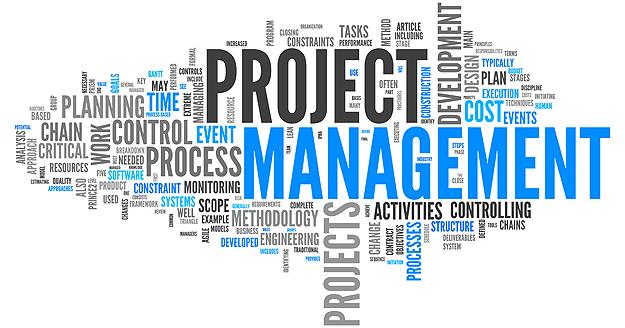What is Design Thinking?
Design Thinking is a problem-solving and human-centred approach that is popular in various fields, including IT. It highlights understanding and addressing the needs and preferences of end-users to create user-friendly and innovative solutions. In IT, Design Thinking, involves applying this methodology to the design, development, and improvement of software, applications, websites, and other technology-driven products or services. Here’s an overview of what Design Thinking in IT entails:

Empathize: It all starts with empathizing with end-users. We aim to understand users’ needs, pain points, and behaviours through interviews, surveys, observations, and other user research methods. This helps teams gain insights into user perspectives and experiences.
Define: After gathering user insights, teams define the problem or challenges they are trying to solve. This step involves synthesizing the research findings and identifying the key issues that needs to be addressed in the project.
Ideate: In the ideation phase, teams generate creative ideas and potential solutions to the defined problem. Brainstorming sessions and workshops encourage diverse thinking and the exploration of innovative concepts. The goal is to come up with a wide range of possibilities without prematurely evaluating or discarding ideas.
Prototype: Once promising ideas emerge, teams create prototypes or mock-ups of the proposed solutions. These prototypes can range from simple sketches and wireframes to more sophisticated interactive prototypes. Prototyping allows for tangible representations of ideas, facilitating feedback and iteration.
Test: Testing is a critical phase in Design Thinking. The team involves end-users in evaluating the prototypes to gather feedback on usability, functionality, and overall user experience. User testing helps identify what works and what doesn’t, informing further refinement of the solution.
Now let’s understand how we at Red Orange Technologies employ Design Thinking in our project methodology.
Stages of project management at Red Orange Technologies:

Stage 1: Project initiation
In traditional project methodology, the first stage typically involves defining project goals, objectives, and scope. While this is undoubtedly crucial, Design Thinking introduces a refreshing twist by putting user-centricity at the forefront. During project initiation, we apply Design Thinking principles, such as empathy and user research. It helps to gain a deep understanding of the end-users’ needs, pain points, and aspirations. The stage also helps in framing project goals and scope that directly addresses user needs, significantly enhancing the likelihood of a successful outcome.
To embark on this journey, our team conduct user interviews, surveys, and/or ethnographic studies. These methods enable us to search into the users’ world, uncovering insights that might otherwise be missed. These insights become the guiding light for our project, ensuring that every decision made is firmly rooted for their users.
Stage 2: Planning and analysis
Traditionally, the planning and analysis stage involves defining project milestones, timelines, and resource requirements. However, when we integrate Design Thinking principles, the focus shifts towards ideation and creative problem-solving. Our team engage in brainstorming sessions to generate innovative solutions that align with user needs and preferences. This approach fosters a culture of collaboration and encourages the exploration of unconventional ideas.
We at Red Orange Technologies make this transition, by encouraging multidisciplinary teams to collaborate closely. Our developers, designers, and business analysts work together to ensure that the project’s direction remains aligned with user-centred goals. This collaborative spirit not only generates innovative ideas but also lays the foundation for a more cohesive project team.
Stage 3: Design and prototyping
This stage is where Design Thinking principles naturally come to the fore. Instead of merely focusing on technical specifications, our team can use user personas and journey maps to design solutions that cater to the end-user’s experience. Prototyping and iterative design become essential components, allowing rapid feedback and adjustment based on user testing. This iterative process ensures that the final product closely aligns with user expectations.
When incorporating Design Thinking into the design and prototyping stage, we involve users and stakeholders in the design process. Rapid prototyping and usability testing allows us to validate assumptions early and make necessary adjustments. This user-centric approach not only results in a more user-friendly product but also helps in building trust and buy-in from project stakeholders.
Stage 4: Development
In the development phase, our team traditionally builds the project according to predefined specifications. However, Design Thinking principles can still be applied to maintain a user-cantered mindset. Our developers work closely with designers and business analysts to ensure that the solution remains aligned with user needs throughout the development process.
To smoothly blend Design Thinking in development, we create a culture of communication and collaboration between our teams and stakeholders. Developers can provide valuable insights into the design concept feasibility, while designers can ensure the user experience remains a top priority. This synergy between technical and design aspects leads to a more harmonious and effective project execution.
Stage 5: Testing and quality assurance
Quality assurance remains critical in project management, but Design Thinking can enhance the testing process by incorporating user testing as a central component. Real users can provide valuable feedback on usability, functionality, and overall experience. This user feedback can lead to refinements and improvements, resulting in a more user-friendly and effective solution.
To introduce user testing into the quality assurance stage, we establish clear testing criteria’s that prioritize user experience. Usability testing, A/B testing, and beta testing are all valuable tools for gathering user feedback. We ensure systematic user feedback collection and documentation and make necessary adjustments to the project based on this feedback.
Stage 6: Deployment and Evaluation
In the final stage of IT project methodology, the project is deployed to the end-users. However, this doesn’t mark the end of the journey; Design Thinking principles continue to play a crucial role. Our teams monitor user feedback and performance data post-deployment to ensure that the solution remains aligned with user needs. Regular evaluation and user feedback loops enable ongoing improvements and adjustments, ensuring that the solution continues to meet evolving user needs.
We, at Red Orange Technologies, ensure Design Thinking integration into the deployment and evaluation stage by establishing a robust feedback mechanism. We encourage users to provide feedback and suggestions for improvements through surveys, user forums, or direct communication. The team analyses and monitors this feedback to prioritize future updates and enhancements.
Here at Red Orange Technologies, we incorporate Design Thinking principles into the six stages of project methodology to offer a holistic and user-centric approach. The teams put user needs and experiences at the forefront of every decision, to create solutions that meet technical requirements. These solutions also delight and engage end-users. Our approach fosters a culture of innovation, adaptability, and continuous improvement that forms the essence of the IT landscape. As the IT industry evolves rapidly, we embrace Design Thinking as a core philosophy in project management. It is our key to long-term success and drives innovation.





We didn’t invent the term “fools with tools.” Still, it’s a perfect definition for the practice of buying a stack of sophisticated cybersecurity technology that’s impossible to manage without an MSP or the budget of a Fortune 500 IT department.